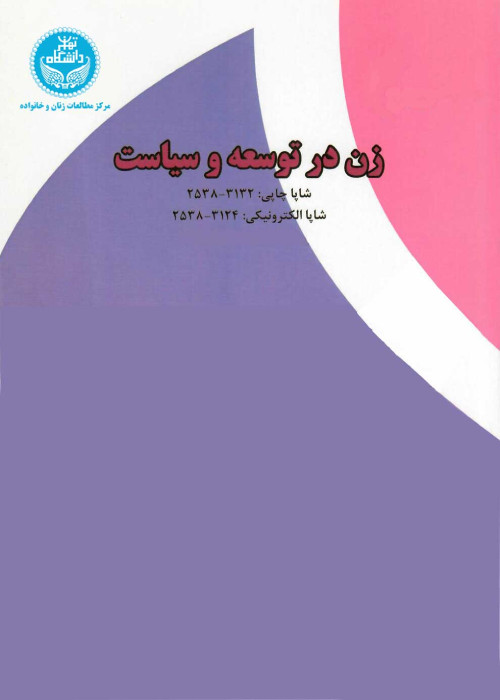An analytical framework for studying gender inequality
Author(s):
Abstract:
The concept of gender gap entails much wider aspects than is commonly believed. Gender inequality in the world has caused many problems for countries in terms of having access to sustained development; reduction of economic growth as the result of gender inequality is an example. People in the third world countries suffer much more. In addition, one may be concerned about gender equity as a development goal in its own right (apart from its beneficial impact on other development goals).A variety of factors lead to gender inequality. Economic factors such as inequality in access to labor market, property ownership, income earning and control upon it, inequality in access to income and credit can be important factors. However, social factors are just as important, which can consequently give rise to many kinds of economic, social and legal inequalities. In many countries, discrimination against women is deeply rooted in social institutions, long-lasting codes of conduct, norms, and traditions. Informal and formal laws determine gender outcomes in education, health, political representation and labor markets. Cultural norms about gender roles are considered to be endogenous and can generate gender inequality and low development. Indeed, when gender gap is internalized, it leads to non egalitarian views about gender roles. Due to such beliefs, boys receive more education and thus the initial gender gap is reinforced. The World Bank refers to gender inequality traps as a major obstacle for economic development (WDR 2006). The present article allows for a better understanding of the persistence of such traps and the means to escape. Moreover, it highlights the negative relationship between gender inequality and development. The study illustrates that gender inequality traps are associated with low economic performance and that cultural norms play a vital role in the consistence of such traps. The main purpose of this article is to investigate the basic criteria of gender inequality as it discusses their structural problems. The main theoretical frameworks discussed in this paper include modernization – neoclassic, Bosrup attitude and Women in Development strategy. As this is a descriptive research it takes advantage of library sources and internet. The results of the study reveal that gender inequality in education hampers reducing the rate of fertility and child mortality.The research illustrates that different kinds of gender inequality can be observed across the world and particularly Iran. The main focus is however on social factors as the key factors that create gender gap in any society. The result shows that policies promoting equal access to education as well as anti-discriminatory policies would evade inequality trap. However, some poverty-evading policies could increase the probability of a non egalitarian situation. Finally, the present article provides testable findings on the relationship between gender inequality with social and economic development.
Keywords:
Language:
Persian
Published:
Women in Development and Politics, Volume:8 Issue: 3, 2010
Page:
7
magiran.com/p790460
دانلود و مطالعه متن این مقاله با یکی از روشهای زیر امکان پذیر است:
اشتراک شخصی
با عضویت و پرداخت آنلاین حق اشتراک یکساله به مبلغ 1,390,000ريال میتوانید 70 عنوان مطلب دانلود کنید!
اشتراک سازمانی
به کتابخانه دانشگاه یا محل کار خود پیشنهاد کنید تا اشتراک سازمانی این پایگاه را برای دسترسی نامحدود همه کاربران به متن مطالب تهیه نمایند!
توجه!
- حق عضویت دریافتی صرف حمایت از نشریات عضو و نگهداری، تکمیل و توسعه مگیران میشود.
- پرداخت حق اشتراک و دانلود مقالات اجازه بازنشر آن در سایر رسانههای چاپی و دیجیتال را به کاربر نمیدهد.
In order to view content subscription is required
Personal subscription
Subscribe magiran.com for 70 € euros via PayPal and download 70 articles during a year.
Organization subscription
Please contact us to subscribe your university or library for unlimited access!


